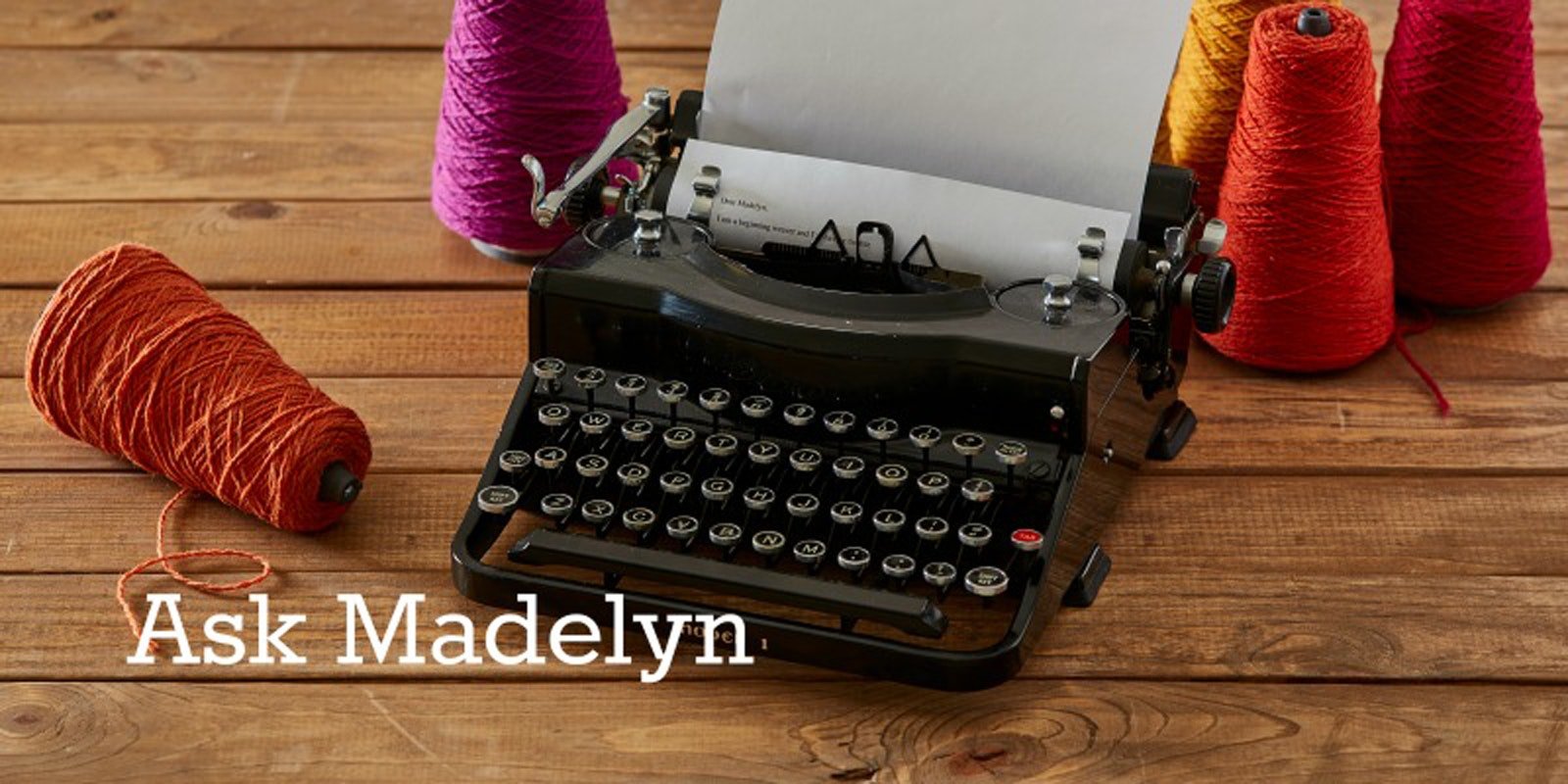Hi Madelyn!
Do you have any pointers about using a warping mill with multiple threads? When I do this, I can’t seem to avoid a false cross. I warp back to front and the twist in the false cross causes me problems when placing the warp on the back beam.
~Phillenore
Hi Phillenore!
When I first read your question, I overlooked that your difficulties came as you warped back to front. So I was ready simply to say that you can ignore the false cross. It is easier to ignore it if you are a front-to-back warper, but basically you can also ignore it if you are warping back to front.
a. The false cross using multiple ends
First of all, the false cross is something that always happens between the first peg and the second peg when you are using multiple threads, usually with a paddle. This happens on both the warping board and the warping mill in exactly the same way. The real cross forms between the second and third pegs. See Photos a–c. If you are warping front to back, when you cut the ends at the loop around the first peg (and tie the cross to secure it), you will sley the threads using the real cross—the false cross simply disappears (Photo d).
b. The real cross
However if you are warping back to front, you will not cut the end loops. Instead, you’ll put the apron rod through those loops and a pair of lease sticks in the cross. Suspend the lease sticks behind the shafts in such a position that the apron rod is just over the back beam. To place the raddle on the back beam, slide it up into the warp threads temporarily (any way they fall) and secure it. Then, to sley the raddle, work from the real cross, taking the designated number of threads for each raddle dent and moving them to their respective dents, one group at a time. As you do this, you can simply ignore the false cross.
c. Both crosses
In preparing this answer, I consulted Suzie Liles, a back-to-front warper, who co-teaches with me at the Weavers’ School. With looms that allow it, she advises placing the raddle in the beater (removing the reed). Then, she sleys the raddle, working from the cross on the lease sticks placed right behind the shafts. In this case, the false cross is far away from her work (between the lease sticks and the back apron rod). She then beams the warp with the raddle still attached to the beater. This won’t work if the heddles take up too much space.
d. The warp after it’s removed from the warping board for front-to-back warping
—Madelyn
If you have a weaving question we would love to hear from you! Please email Madelyn!





